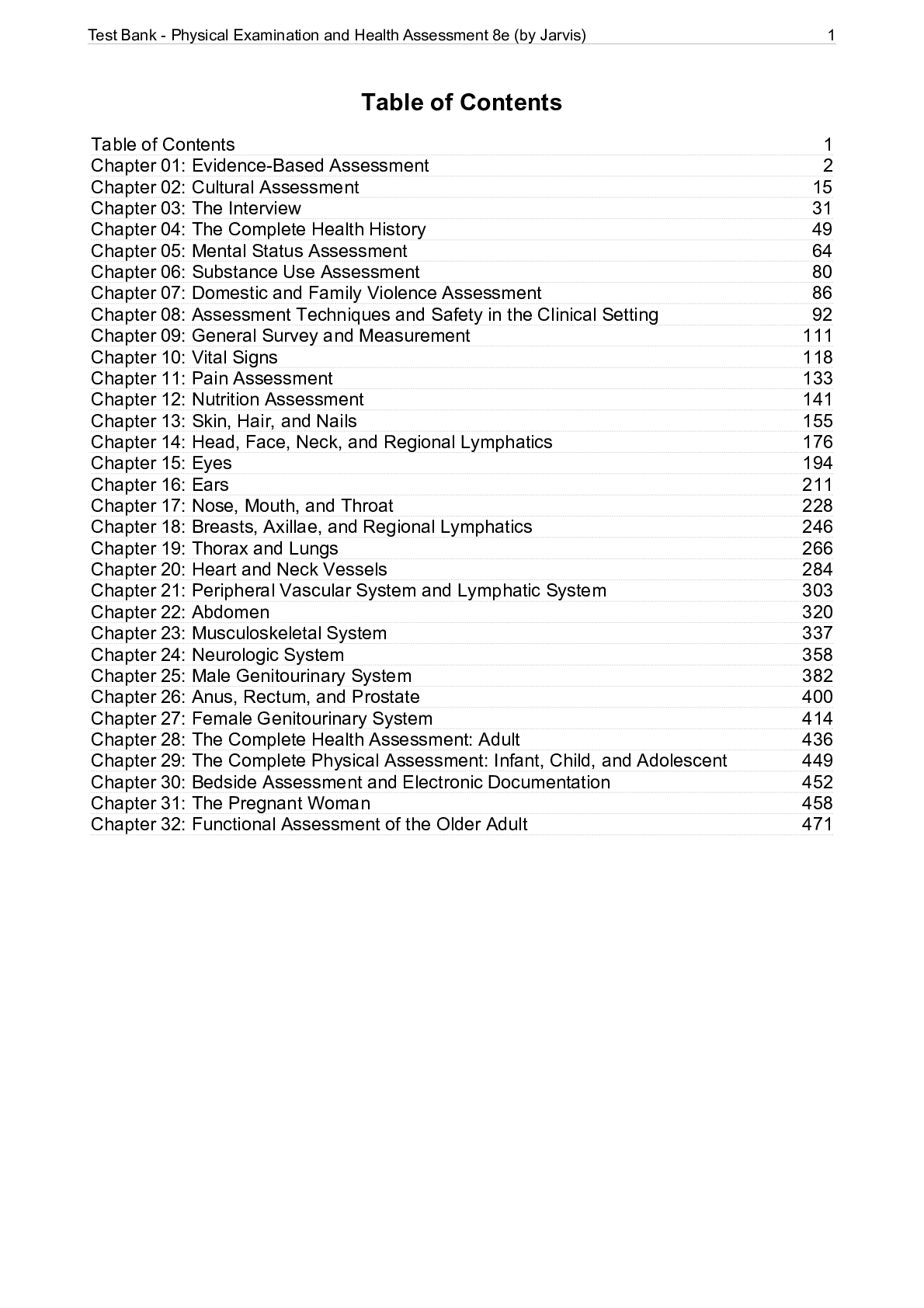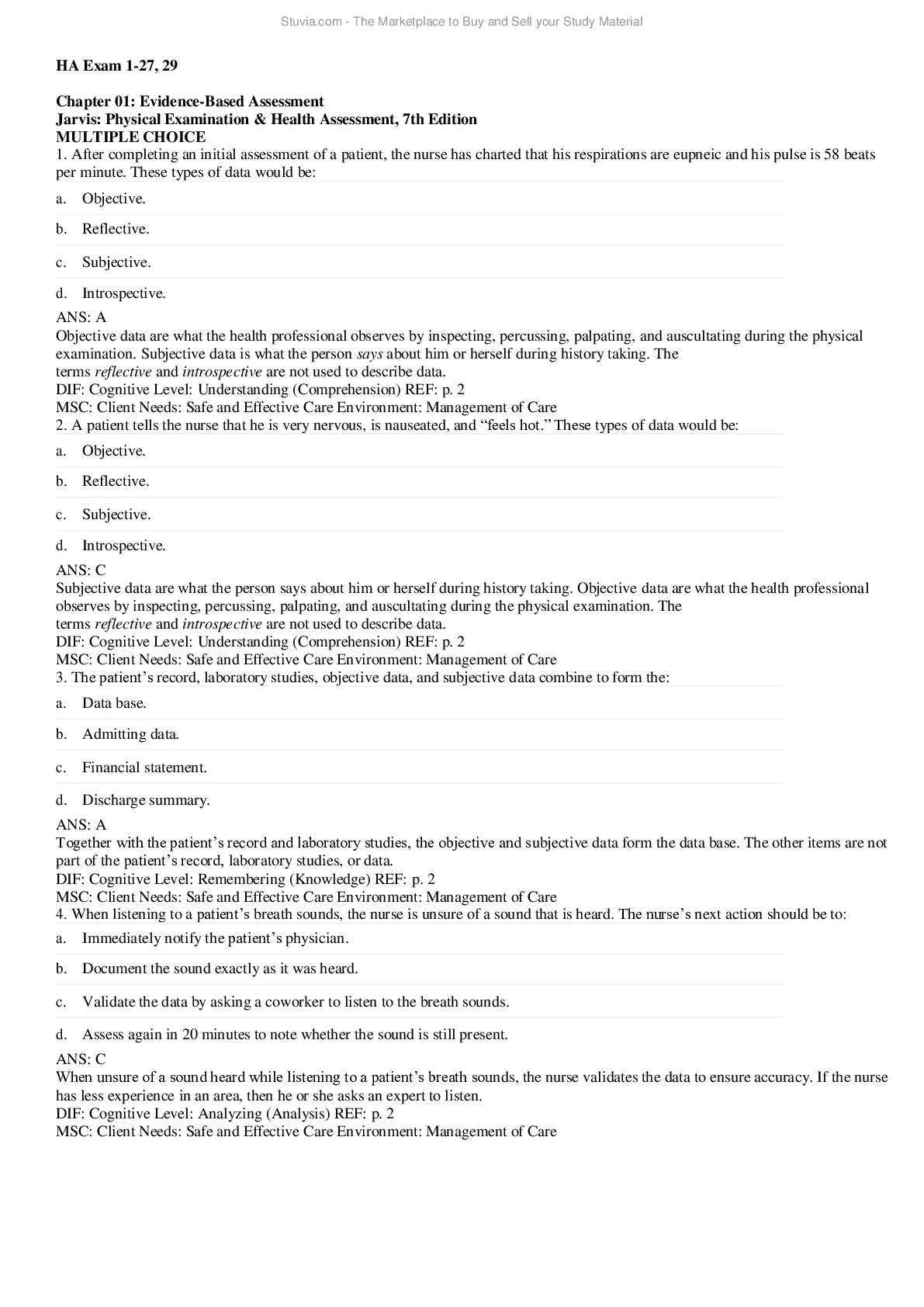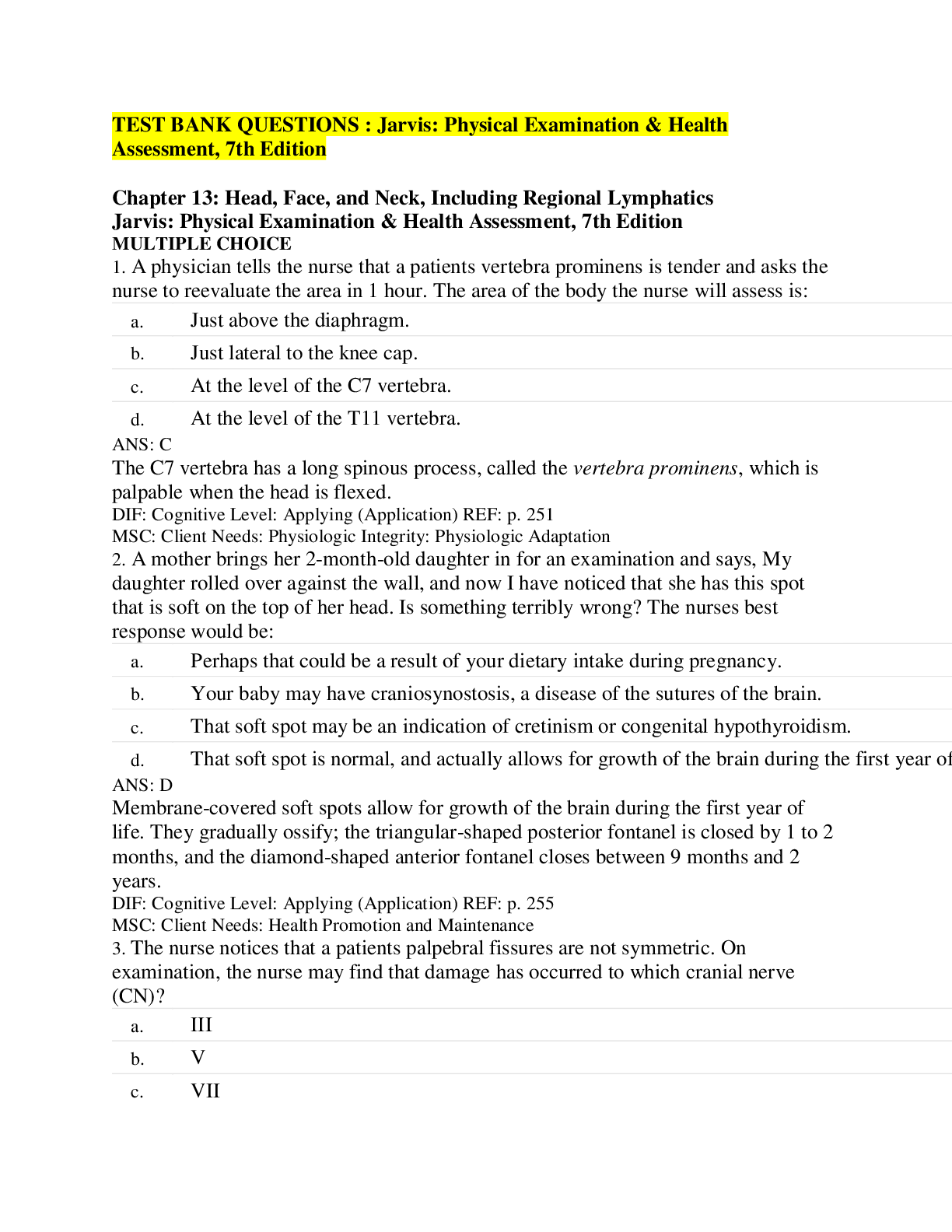*NURSING > TEST BANK > Chapter 08: Assessment Techniques and Safety in the Clinical Setting Jarvis: Physical Examination & (All)
Chapter 08: Assessment Techniques and Safety in the Clinical Setting Jarvis: Physical Examination & Health Assessment, 7th Edition
Document Content and Description Below
Chapter 08: Assessment Techniques and Safety in the Clinical Setting Jarvis: Physical Examination & Health Assessment, 7th Edition MULTIPLE CHOICE 1. When performing a physical assessment, the... first technique the nurse will always use is: 2. The nurse is preparing to perform a physical assessment. Which statement is true about the physical assessment? The inspection phase: 3. The nurse is assessing a patient’s skin during an office visit. What part of the hand and technique should be used to best assess the patient’s skin temperature? : 4. Which of these techniques uses the sense of touch to assess texture, temperature, moisture, and swelling when the nurse is assessing a patient? 5. The nurse is preparing to assess a patient’s abdomen by palpation. How should the nurse proceed? 6. The nurse would use bimanual palpation technique in which situation? 7. The nurse is preparing to percuss the abdomen of a patient. The purpose of the percussion is to assess the of the underlying tissue. 8. The nurse is reviewing percussion techniques with a newly graduated nurse. Which technique, if used by the new nurse, indicates that more review is needed? 9. When percussing over the liver of a patient, the nurse notices a dull sound. The nurse should: 10. The nurse is unable to identify any changes in sound when percussing over the abdomen of an obese patient. What should the nurse do next? 11. The nurse hears bilateral loud, long, and low tones when percussing over the lungs of a 4- year-old child. The nurse should: 12. A patient has suddenly developed shortness of breath and appears to be in significant respiratory distress. After calling the physician and placing the patient on oxygen, which of these actions is the best for the nurse to take when further assessing the patient? 13. The nurse is teaching a class on basic assessment skills. Which of these statements is true regarding the stethoscope and its use? 14. The nurse is preparing to use a stethoscope for auscultation. Which statement is true regarding the diaphragm of the stethoscope? The diaphragm: 15. Before auscultating the abdomen for the presence of bowel sounds on a patient, the nurse should: 16. The nurse will use which technique of assessment to determine the presence of crepitus, swelling, and pulsations? 17. The nurse is preparing to use an otoscope for an examination. Which statement is true regarding the otoscope? The otoscope: 18. An examiner is using an ophthalmoscope to examine a patient’s eyes. The patient has astigmatism and is nearsighted. The use of which of these techniques would indicate that the examination is being correctly performed? 19. The nurse is unable to palpate the right radial pulse on a patient. The best action would be to: 20. The nurse is preparing to perform a physical assessment. The correct action by the nurse is reflected by which statement? The nurse: 21. A man is at the clinic for a physical examination. He states that he is “very anxious” about the physical examination. What steps can the nurse take to make him more comfortable? 22. When performing a physical examination, safety must be considered to protect the examiner and the patient against the spread of infection. Which of these statements describes the most appropriate action the nurse should take when performing a physical examination? 23. The nurse is examining a patient’s lower leg and notices a draining ulceration. Which of these actions is most appropriate in this situation? 24. During the examination, offering some brief teaching about the patient’s body or the examiner’s findings is often appropriate. Which one of these statements by the nurse is most appropriate? 25. The nurse keeps in mind that the most important reason to share information and to offer brief teaching while performing the physical examination is to help the: 26. The nurse is examining an infant and prepares to elicit the Moro reflex at which time during the examination? 27. When preparing to perform a physical examination on an infant, the nurse should: 28. A 6-month-old infant has been brought to the well-child clinic for a check-up. She is currently sleeping. What should the nurse do first when beginning the examination? 29. A 2-year-old child has been brought to the clinic for a well-child checkup. The best way for the nurse to begin the assessment is to: 30. The nurse is examining a 2-year-old child and asks, “May I listen to your heart now?” Which critique of the nurse’s technique is most accurate? 31. With which of these patients would it be most appropriate for the nurse to use games during the assessment, such as having the patient “blow out” the light on the penlight? 32. The nurse is preparing to examine a 4-year-old child. Which action is appropriate for this age group? 33. When examining a 16-year-old male teenager, the nurse should: 34. When examining an older adult, the nurse should use which technique? 35. The most important step that the nurse can take to prevent the transmission of microorganisms in the hospital setting is to: 36. Which of these statements is true regarding the use of Standard Precautions in the health care setting? 37. The nurse is preparing to assess a hospitalized patient who is experiencing significant shortness of breath. How should the nurse proceed with the assessment? 38. When examining an infant, the nurse should examine which area first? 39. While auscultating heart sounds, the nurse hears a murmur. Which of these instruments should be used to assess this murmur? 40. During an examination of a patient’s abdomen, the nurse notes that the abdomen is rounded and firm to the touch. During percussion, the nurse notes a drumlike quality of the sounds across the quadrants. This type of sound indicates: 41. The nurse is preparing to examine a 6-year-old child. Which action is most appropriate? 42. During auscultation of a patient’s heart sounds, the nurse hears an unfamiliar sound. The nurse should: MULTIPLE RESPONSE 1. The nurse is preparing to palpate the thorax and abdomen of a patient. Which of these statements describes the correct technique for this procedure? Select all that apply. [Show More]
Last updated: 1 year ago
Preview 1 out of 16 pages
Instant download
.png)
Buy this document to get the full access instantly
Instant Download Access after purchase
Add to cartInstant download
Reviews( 0 )
Document information
Connected school, study & course
About the document
Uploaded On
Mar 21, 2021
Number of pages
16
Written in
Additional information
This document has been written for:
Uploaded
Mar 21, 2021
Downloads
0
Views
87

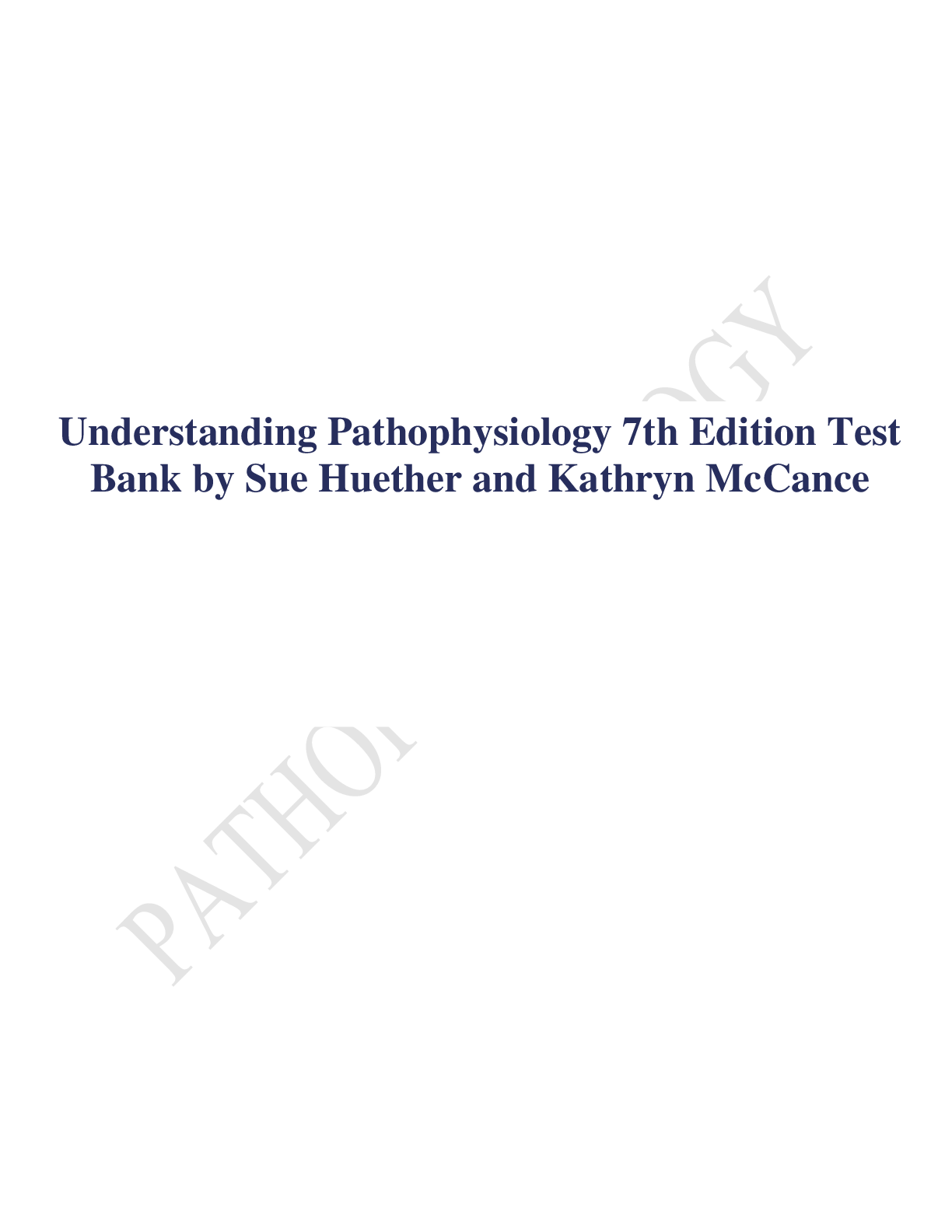
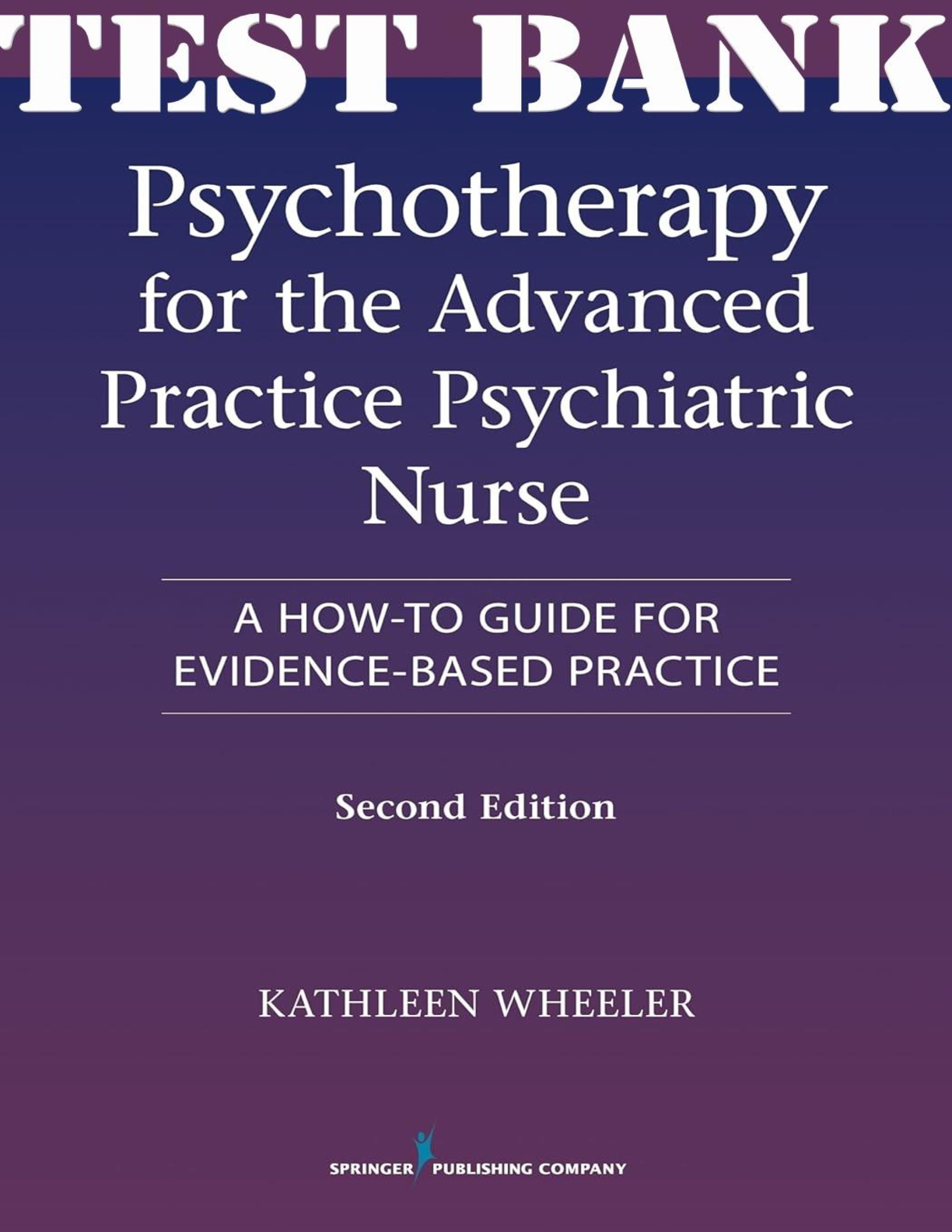


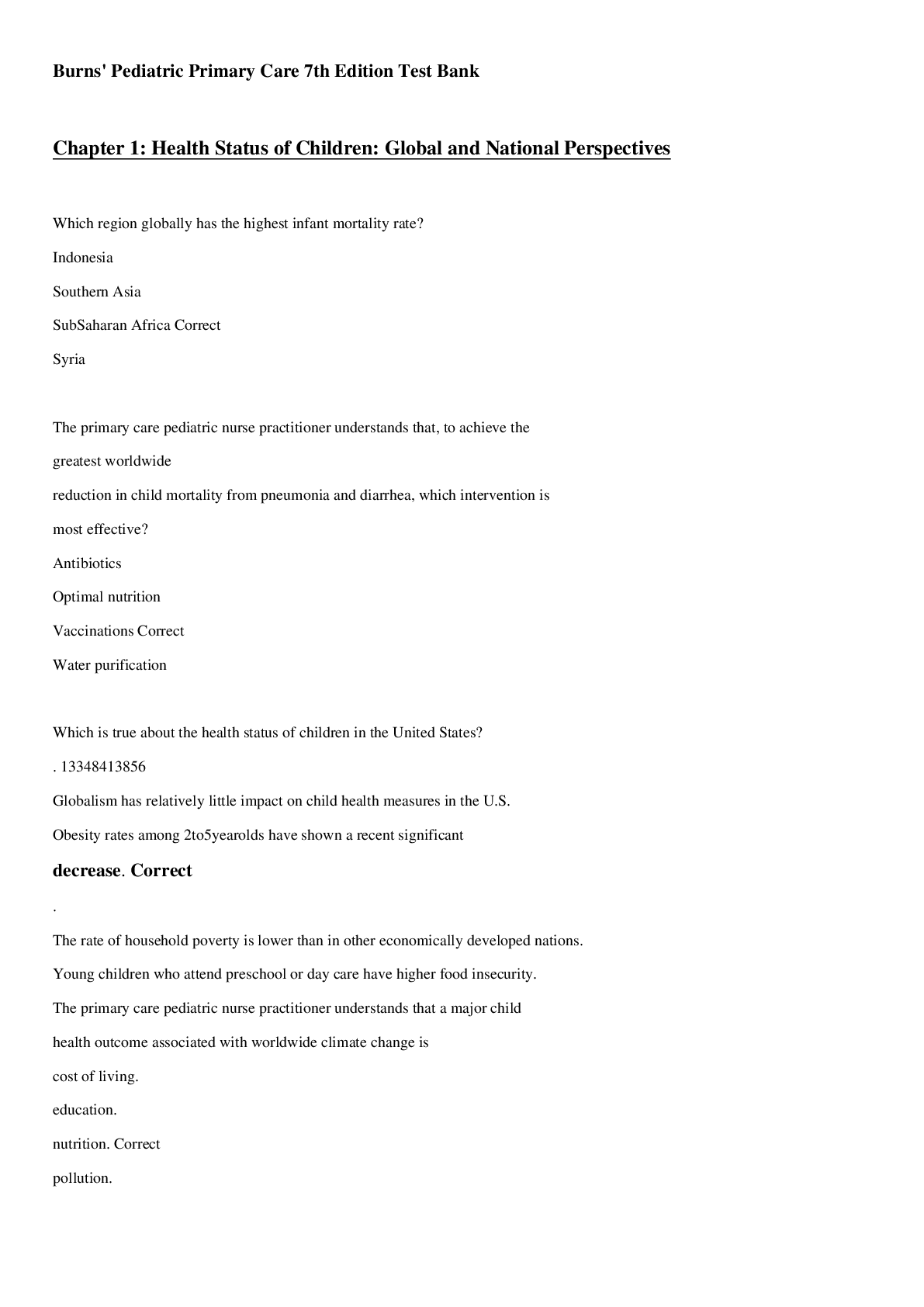



 (1).png)

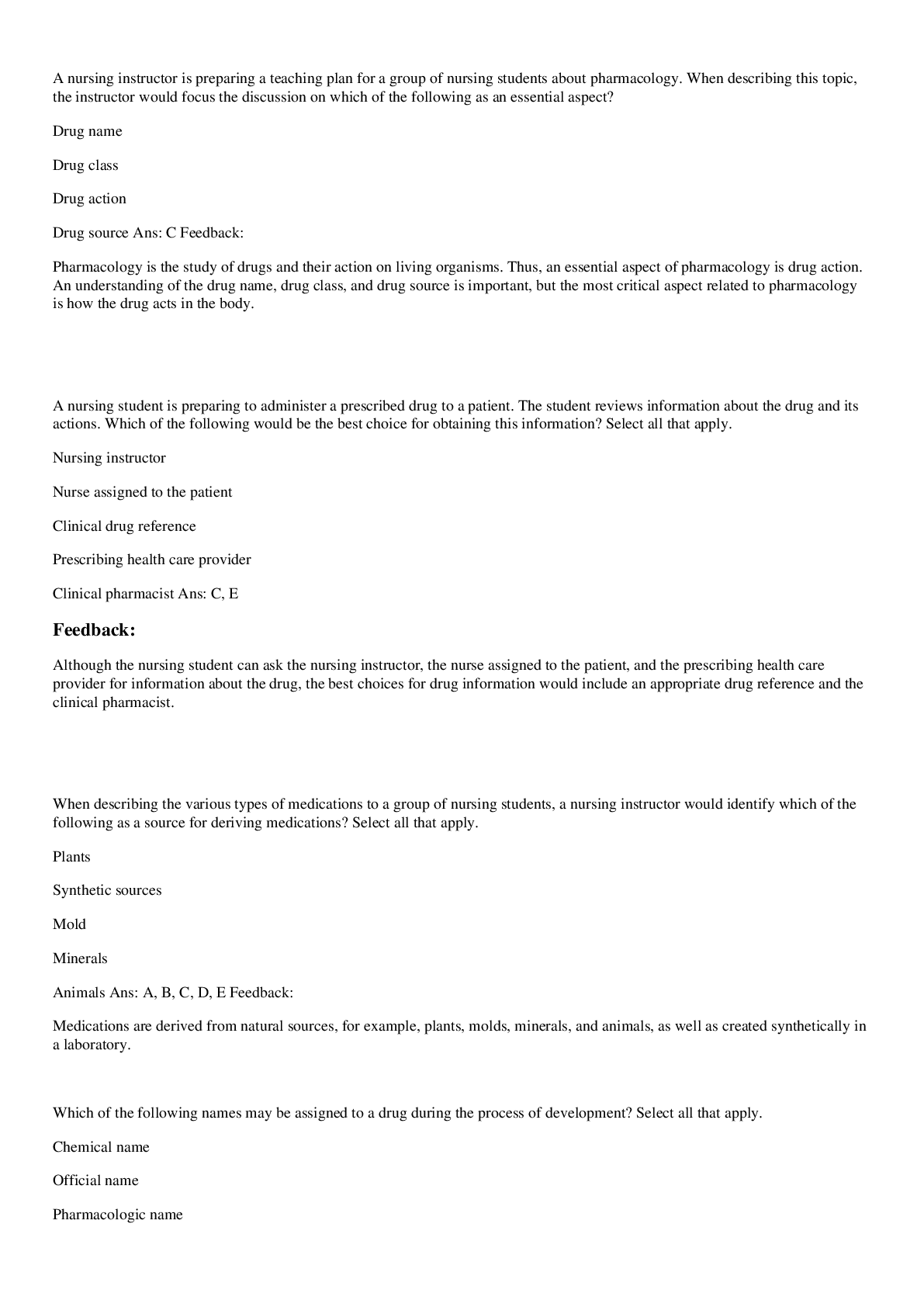
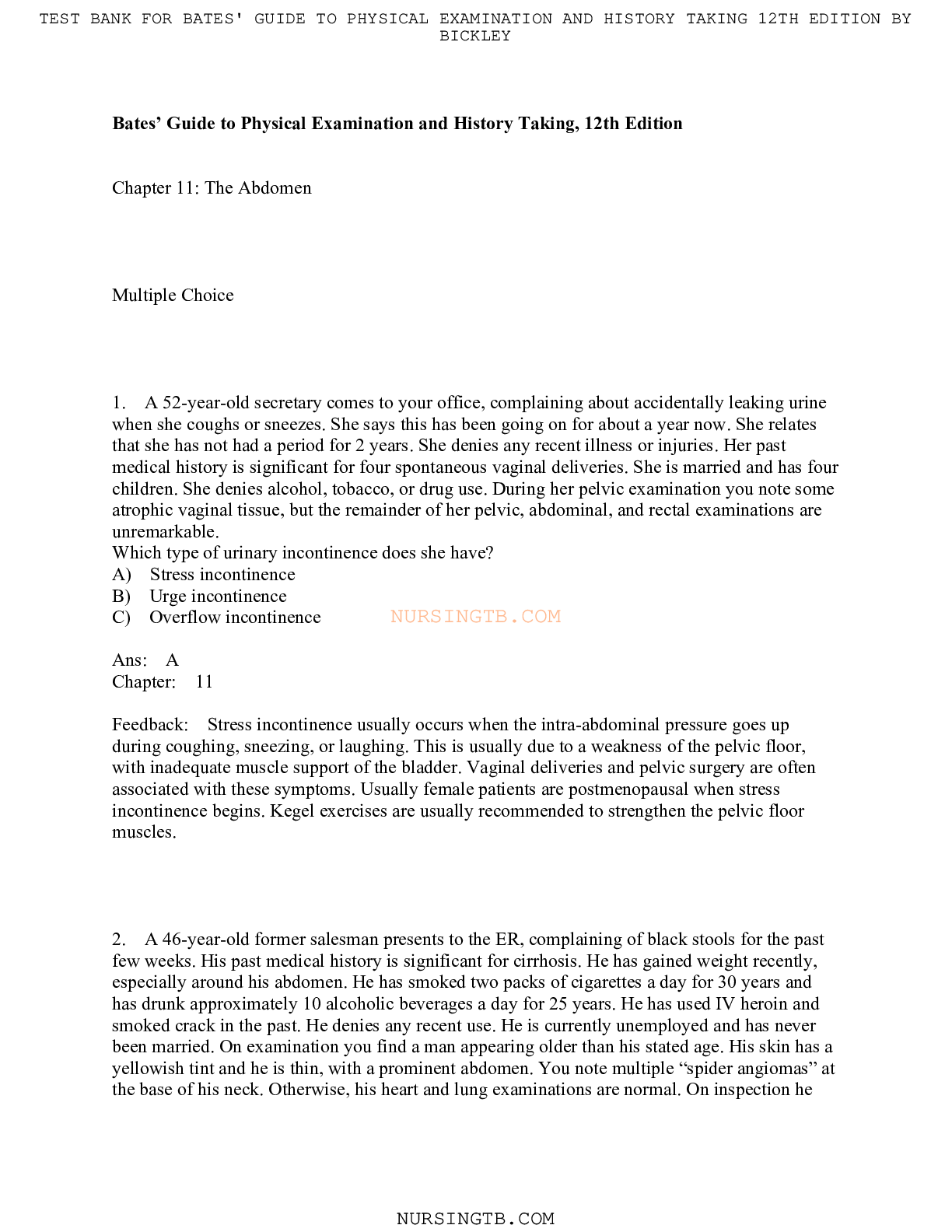


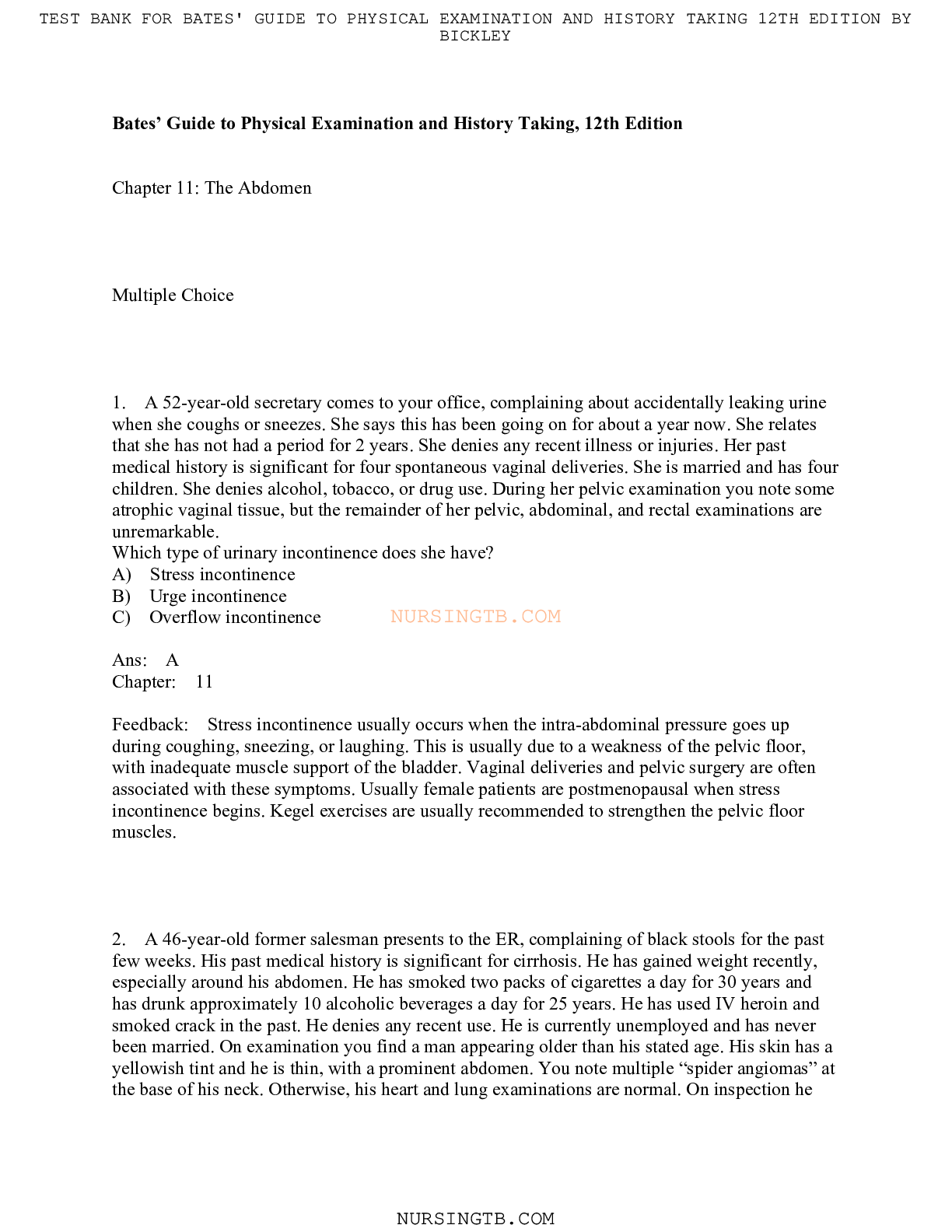
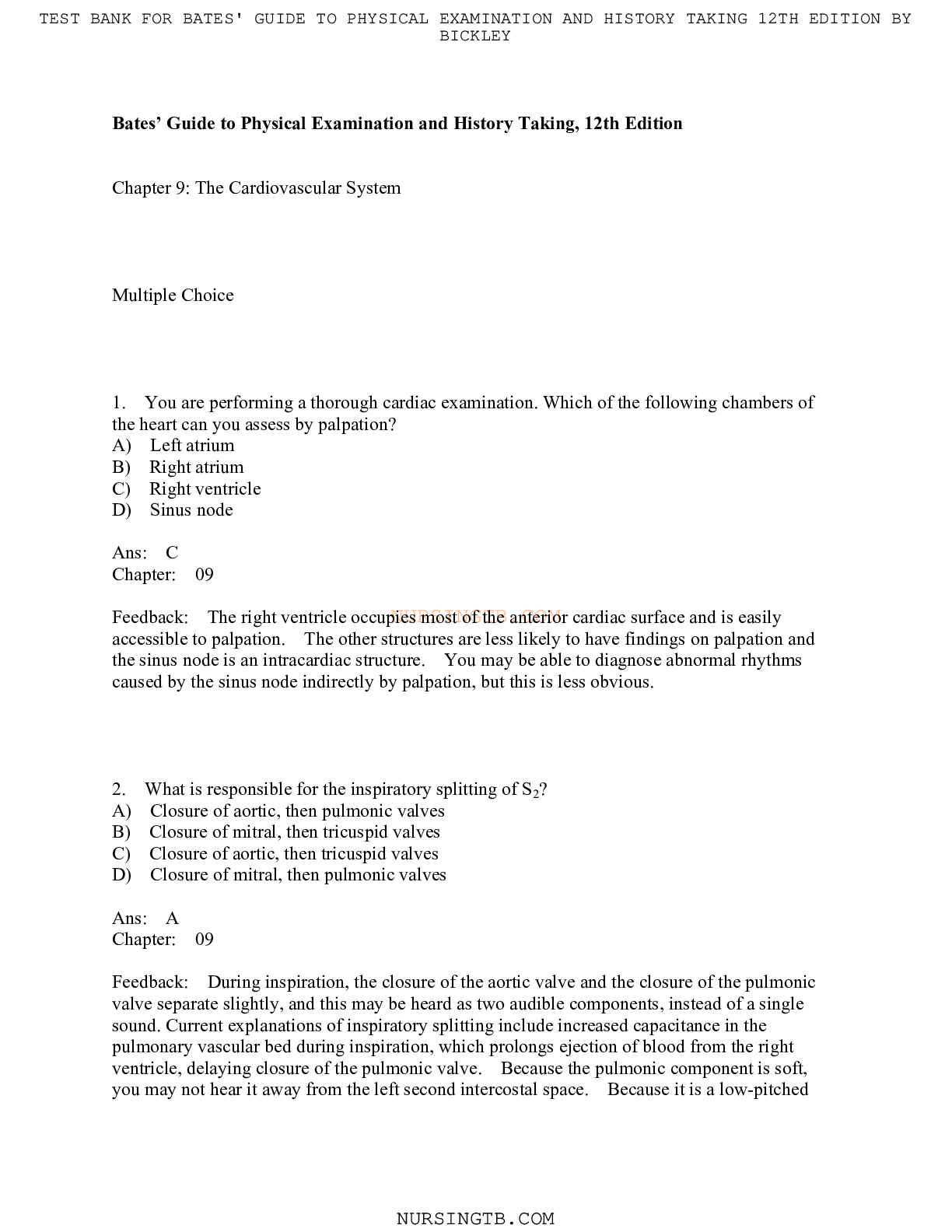
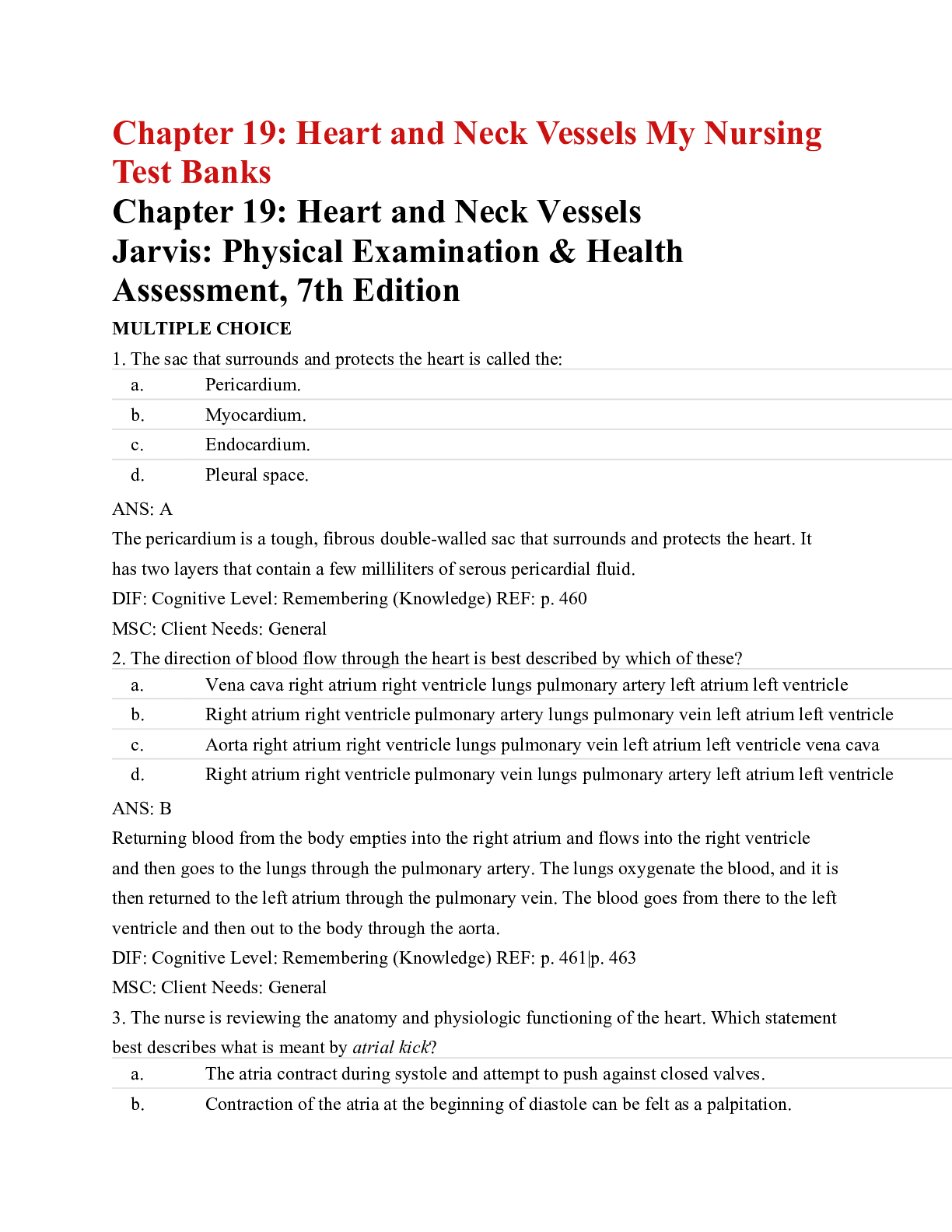
.png)
